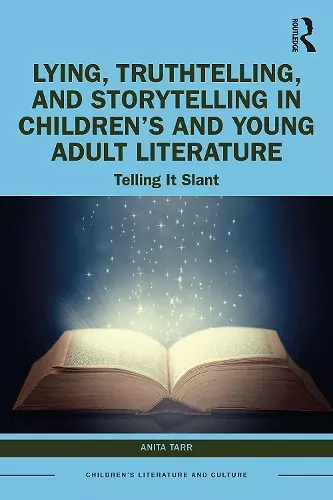Lying, Truthtelling, and Storytelling in Children’s and Young Adult Literature
Telling It Slant
Format:Hardback
Publisher:Taylor & Francis Ltd
Published:20th Dec '23
Currently unavailable, and unfortunately no date known when it will be back
This hardback is available in another edition too:
- Paperback£38.99(9781032532349)

Even though we instruct our children not to lie, the truth is that lying is a fundamental part of children’s development—socially, cognitively, emotionally, morally. Lying can sometimes be more compassionate than telling the truth, even more ethical. Reading specific children’s books can instruct child readers how to be guided by an etiquette of lying, to know when to tell the truth and when to lie. Equally important, these stories can help prevent them from being prey to those liars who are intent on taking advantage of them. Becoming a critical reader requires that one learn how to lie judiciously as well as to see through others’ lies. When humans first began to speak, we began to lie. When we began to lie, we started telling stories. This is the paradox, that in order to tell truthful stories, we must be good liars. Novels about child-artists showcased here illustrate how the protagonist embraces this paradox, accepting the stigma that a writer is a liar who tells the truth. Emily Dickinson’s phrase “tell it slant” best expresses the vision of how writers for children and young adults negotiate the conundrum of both protecting child readers and teaching them to protect themselves. This volume explores the pervasiveness of lying as well as the necessity for lying in our society; the origins of lying as connected to language acquisition; the realization that storytelling is both lying and truthtelling; and the negotiations child-artists must process in order to grasp the paradox that to become storytellers they must become expert liars and lie-detectors.
"Tarr’s lucid language and precise analysis add to its appeal, making it an essential read for both children's literature and YA literature students and researchers alike."
--Prateeti Chowdhury, International Journal of Young Adult Literature, Vol. 5.1
ISBN: 9781032532332
Dimensions: unknown
Weight: 467g
242 pages